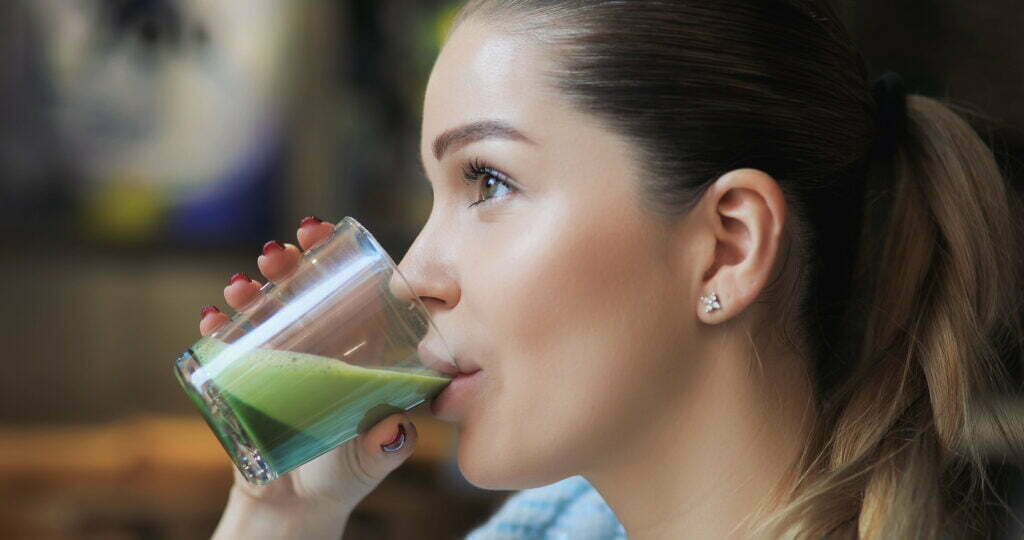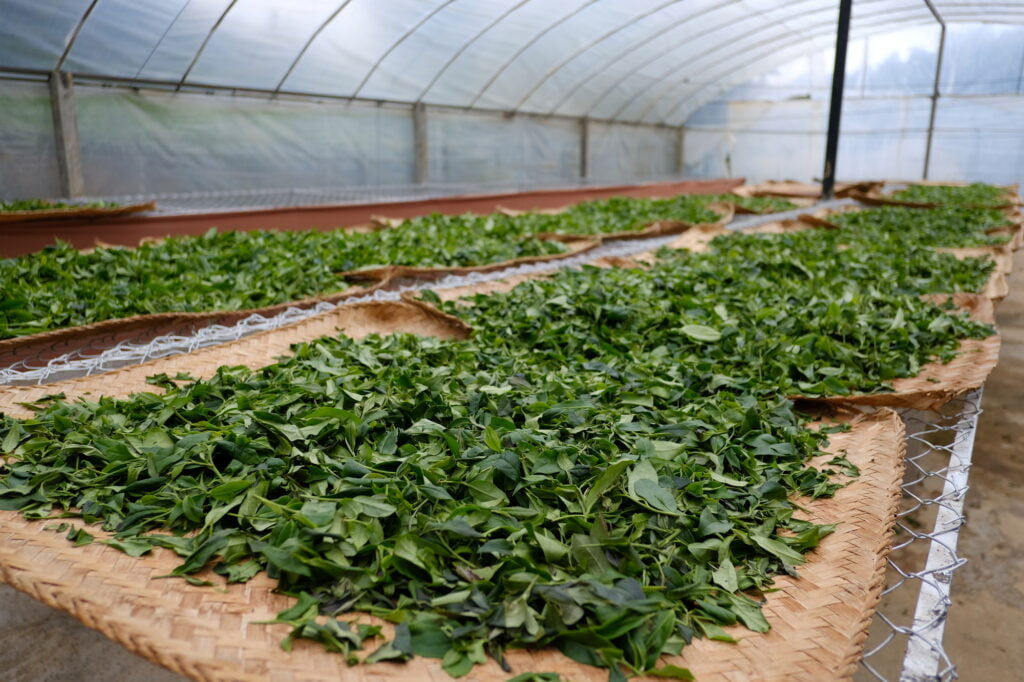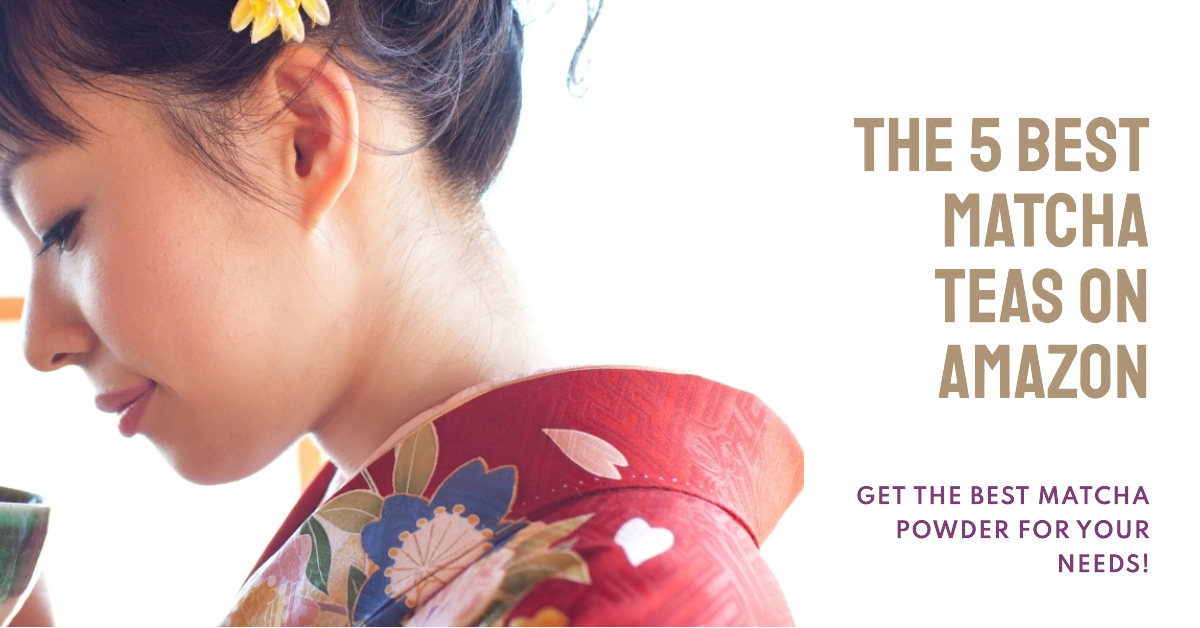Just like with any trend or topic, there are a number of myths and misconceptions surrounding this vibrant matcha tea. I’m on a mission to help you separate fact from fiction and debunk some common myths that just might be standing between you and an even deeper love for matcha.
So buckle up, and let’s embark on this journey to uncover the truth, squash some rumors, and gain a deeper understanding of the mystical world of matcha!
Myth #1: Matcha Tastes Bitter and Grass-Like

Contrary to popular belief, not all matcha has a bitter and grass-like taste. The flavor highly depends on the quality of the matcha powder and how it is prepared.
High-quality matcha should offer a well-balanced and complex flavor profile featuring bitterness, sweetness, and umami notes. Lower-grade matcha, on the other hand, may result in a more bitter and grassy taste, causing this misconception.
It’s important to source premium matcha powder to ensure a pleasant flavor experience. Additionally, adjusting the preparation method, such as the ratio of water to matcha or trying different brewing techniques, can help in achieving a smoother and more palatable taste.
So, rest assured that with the right matcha powder and preparation, you can enjoy a delightful and healthful tea without any unpleasant bitterness.
Myth #2: Matcha and Green Tea Powder are the Same

Many people often mistake matcha and green tea powder for being the same thing. However, this is a myth that should be debunked. While matcha and green tea powder come from the same plant, Camellia sinensis, they have some significant differences in processing, flavor, and nutrient content.
Matcha is a high-quality green tea that is shade-grown, solar-grown, and hand-picked, resulting in more vibrant color and richer flavor. It is then ground into a fine powder, which allows the entire tea leaf to be consumed, thereby concentrating the nutrients and antioxidants in the drink. On the other hand, regular green tea powder comes from steamed or pan-fried leaves, followed by drying and being rolled into pellets.
These distinctions in processing lead to differences in taste, color, and nutritional benefits, setting matcha and green tea powder apart from one another. Therefore, while they may have similarities, it is important to recognize that matcha and green tea powder are not the same.
Myth #3: Matcha is Difficult to Prepare

It is a common misconception that matcha is challenging to make, requiring specialized equipment and intricate techniques. While traditional preparation requires specialized tools like a bamboo whisk and matcha bowl, it is unnecessary. The main goal when making matcha is to create a smooth, frothy drink with no lumps of powder. This can be easily achieved using everyday kitchenware found in most homes.
To make matcha without traditional tools, simply add the desired amount of matcha powder to a lidded jar with warm water and shake vigorously until well combined. Alternatively, you can use a blender, milk frother, or even an electric whisk.
Remember, the key is to make sure the powder is evenly distributed, creating a smooth and creamy beverage. With a little creativity and patience, anyone can effortlessly prepare and enjoy the numerous health benefits of matcha tea.
Myth #4: Matcha Has 137 Times More Antioxidants Than Regular Green Tea
Despite the popular claim that matcha has 137 times more antioxidants than regular green tea, this myth stems from a misinterpretation of a study conducted at the University of Colorado. The study’s findings were taken out of context by marketers who used the impressive 137 figure to promote matcha’s health benefits.
In reality, the study compared the antioxidant content of a specific green tea, China Green Tips, with matcha rather than comparing matcha to the average green tea. Other research shows that nearly all green teas, when consumed in powdered form, actually have more catechins (a type of antioxidant) than matcha, with the exception of roasted hojicha. While matcha offers numerous health benefits, it is important to separate fact from fiction when it comes to its antioxidant content compared to other green teas.
Myth #5: Drinking Matcha at Night Keeps You Awake
Many people believe that drinking matcha at night will keep them awake due to its caffeine content. While it’s true that matcha does contain caffeine, it’s essential to understand that it has about half the caffeine levels found in an equivalently sized cup of coffee.
Additionally, matcha is rich in L-theanine, an organic compound that promotes relaxation without causing sleepiness. L-theanine works in tandem with caffeine in matcha to provide calm and steady energy, perfect for meditation and enhanced focus.
As a result, unless an individual is highly sensitive to caffeine, consuming matcha at night can support relaxation, improve health, and even enhance sleep quality. So, don’t let the myth scare you away from enjoying a soothing cup of matcha in the evening. Cheers to a good night’s sleep!
The Truth About Matcha and Caffeine
There is a common myth that matcha, a type of green tea, contains excessive amounts of caffeine. Busting this myth and providing factual data on matcha and its caffeine content is essential. Contrary to popular belief, matcha contains significantly less caffeine than a cup of coffee, with around one-quarter of the caffeine levels of a single espresso shot. Therefore, it does not have the same stimulating effect as coffee, and it won’t keep you awake if you drink it at night in moderate amounts.
The unique aspect of matcha is its high concentration of the amino acid L-theanine. This natural compound works in synergy with caffeine, providing a calming effect that balances the stimulating property of caffeine. As a result, matcha’s caffeine content promotes mental alertness without causing jitteriness, making it an excellent alternative to coffee for a gentle energy boost.
- About the Author
- Latest Posts








